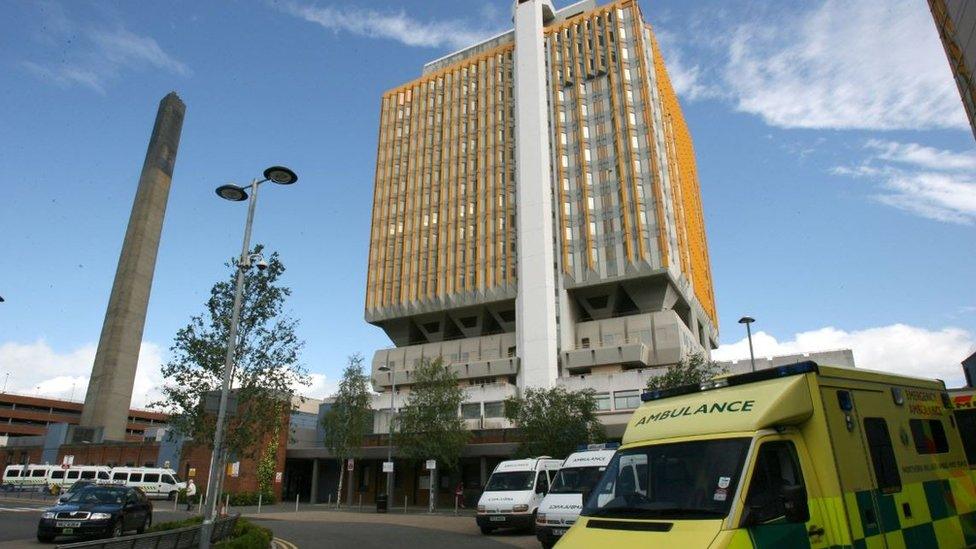Coronavirus: Death toll in NI about 70% higher than daily figure
- Published
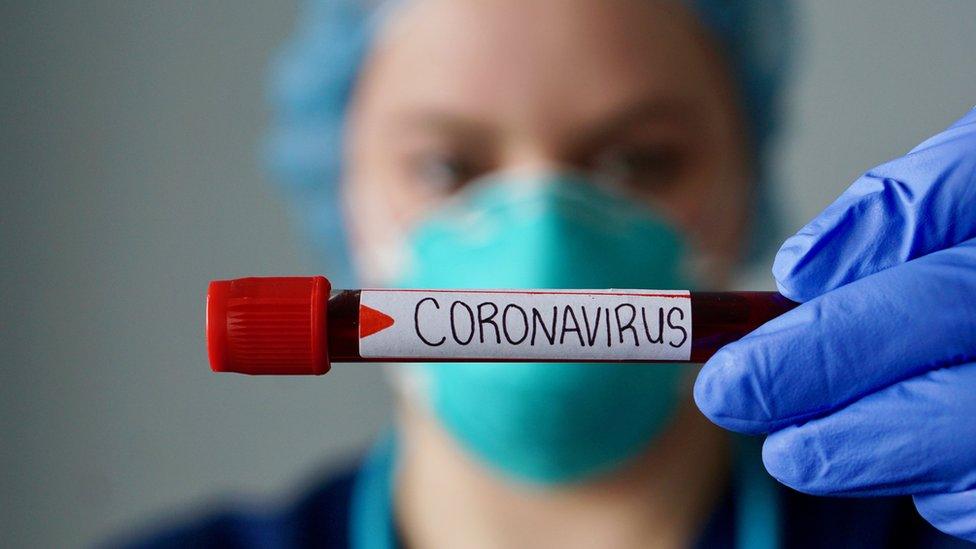
The number of people who have died because of Covid-19 in Northern Ireland is approximately 70% higher than the figure we hear announced every day.
By 1 May, 376 deaths were announced by the Department of Health.
However, if you look back at death registrations filed by that date, the figure is higher: just under 500 death certificates mentioned Covid-19.
But using the measure preferred by statisticians, all deaths above what would usually be expected during that time of year, it was even higher: 645.
Each version of measurement of the death toll answers different questions. Let's look at them in turn.

Method 1: Deaths with positive test result
The number of deaths announced every day by each government in the UK only includes deaths of people who test positive for coronavirus. This is the figure we get from the NI department of health every afternoon.
That is fine for scientists who want to monitor patterns in the growth of the epidemic precisely, but it's not designed to measure the overall death toll because it misses people who never had a lab test.
And when testing was largely limited to hospitals, those daily figures were missing most deaths in the community.
In short, the daily count gives the trend, but misses the overall death toll.
In fact, scientists often prefer to use a different measure to gauge the trends: the number of people in hospital with Covid-19 because that gives an early read.
It takes more than three weeks on average for someone to go from being infected to dying, so the trends in deaths only tell us about what was happening to infections in late April.
Both sets of data look to have peaked just after the middle of April.
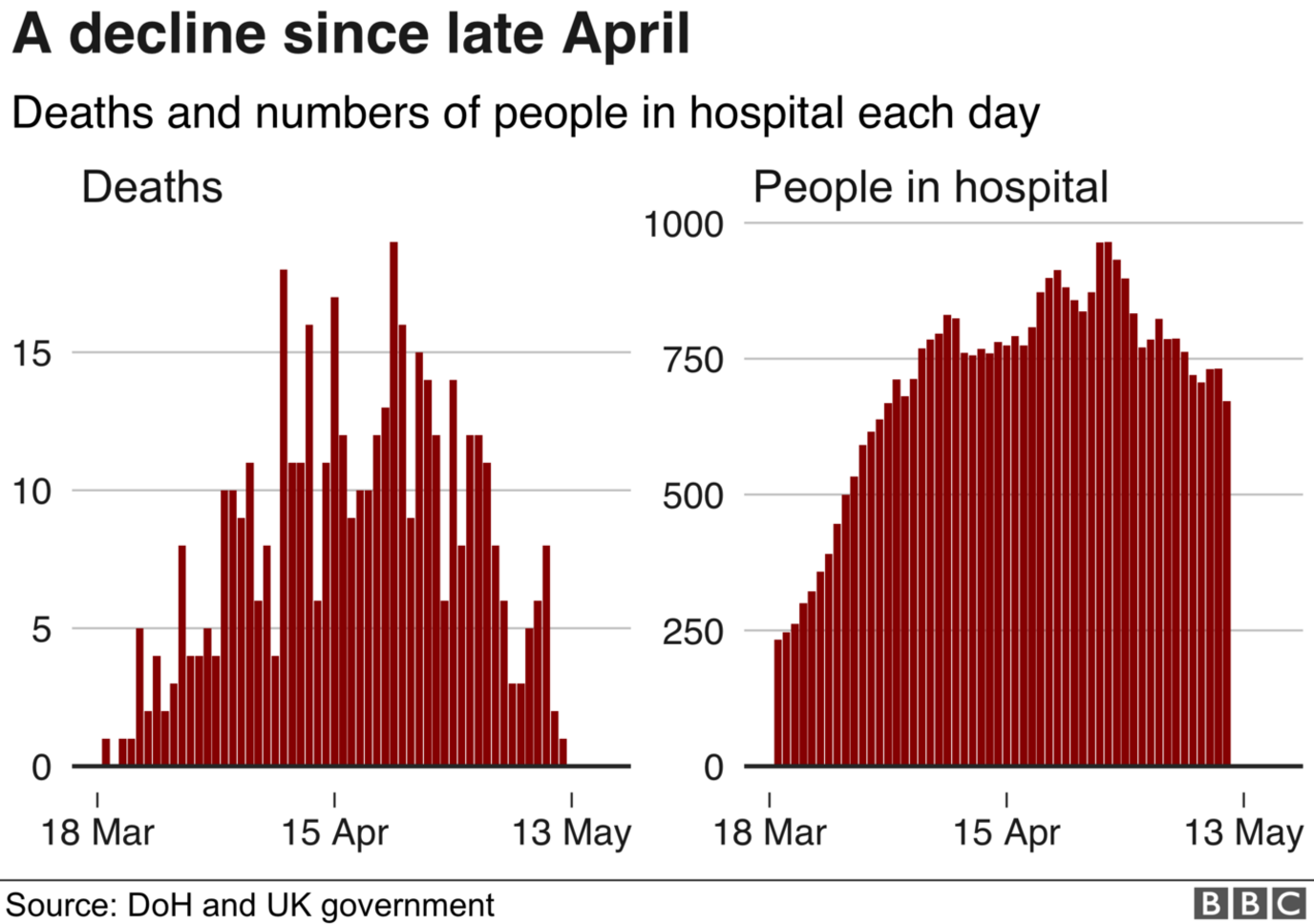
Northern Ireland deaths and people in hospital

The data on hospital beds in the rest of the UK suggest that Wales and Scotland passed the peak at similar times, but that England peaked just before Easter and has been falling faster since then. This is particularly pronounced in London.

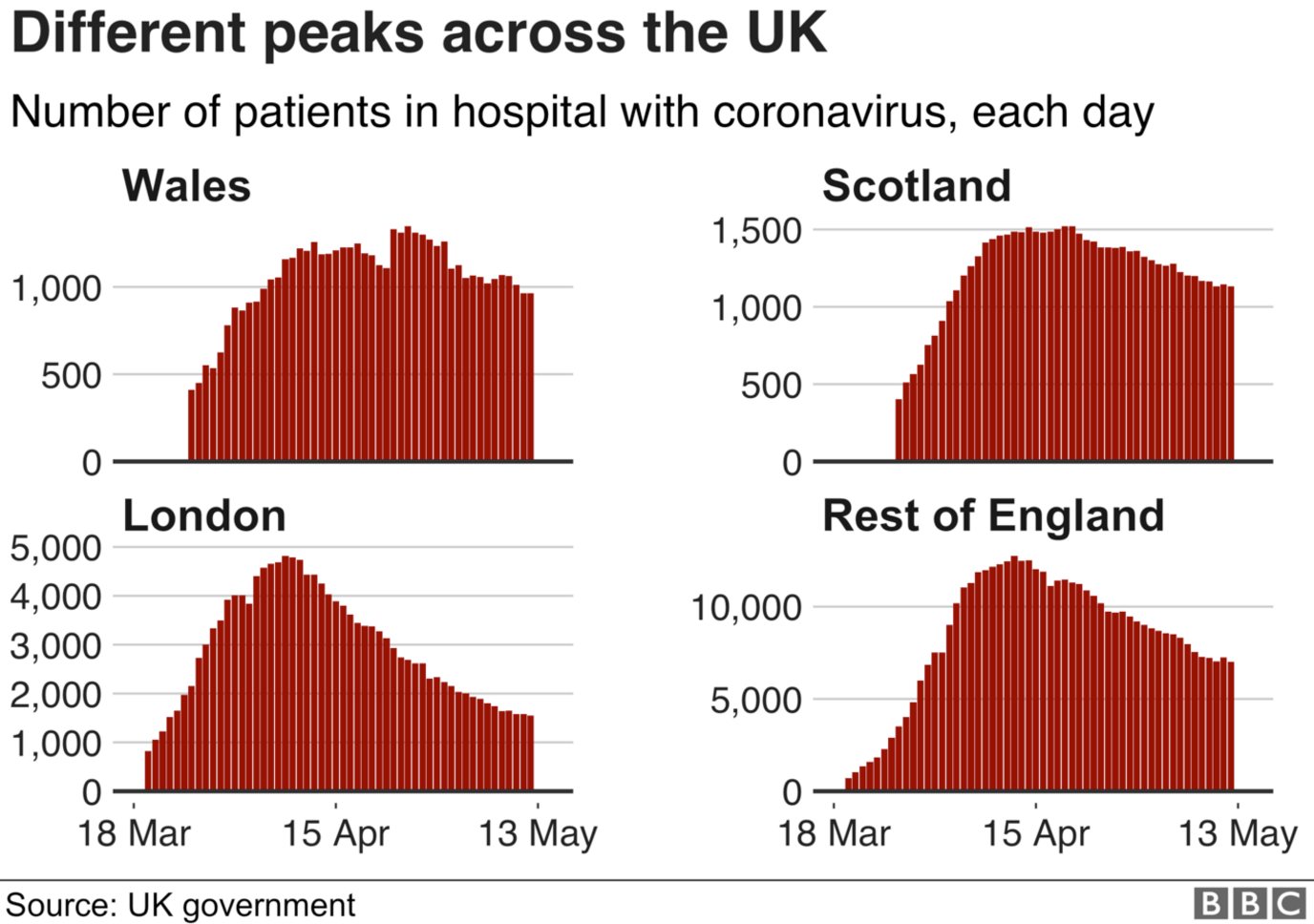
UK hospital beds
Method 2: Death certificate mentions Covid-19
If someone's death is thought to be caused by Covid-19, that will show up on the death certificate, even if there wasn't a lab test to prove it. Counting this captures more of the picture in the community.
And it's this data that shows Northern Ireland's care homes - like in Scotland - have overtaken hospitals as the place where most Covid-19 deaths occur.
But in every other nation in the UK, coronavirus death registrations in care homes have started to fall.
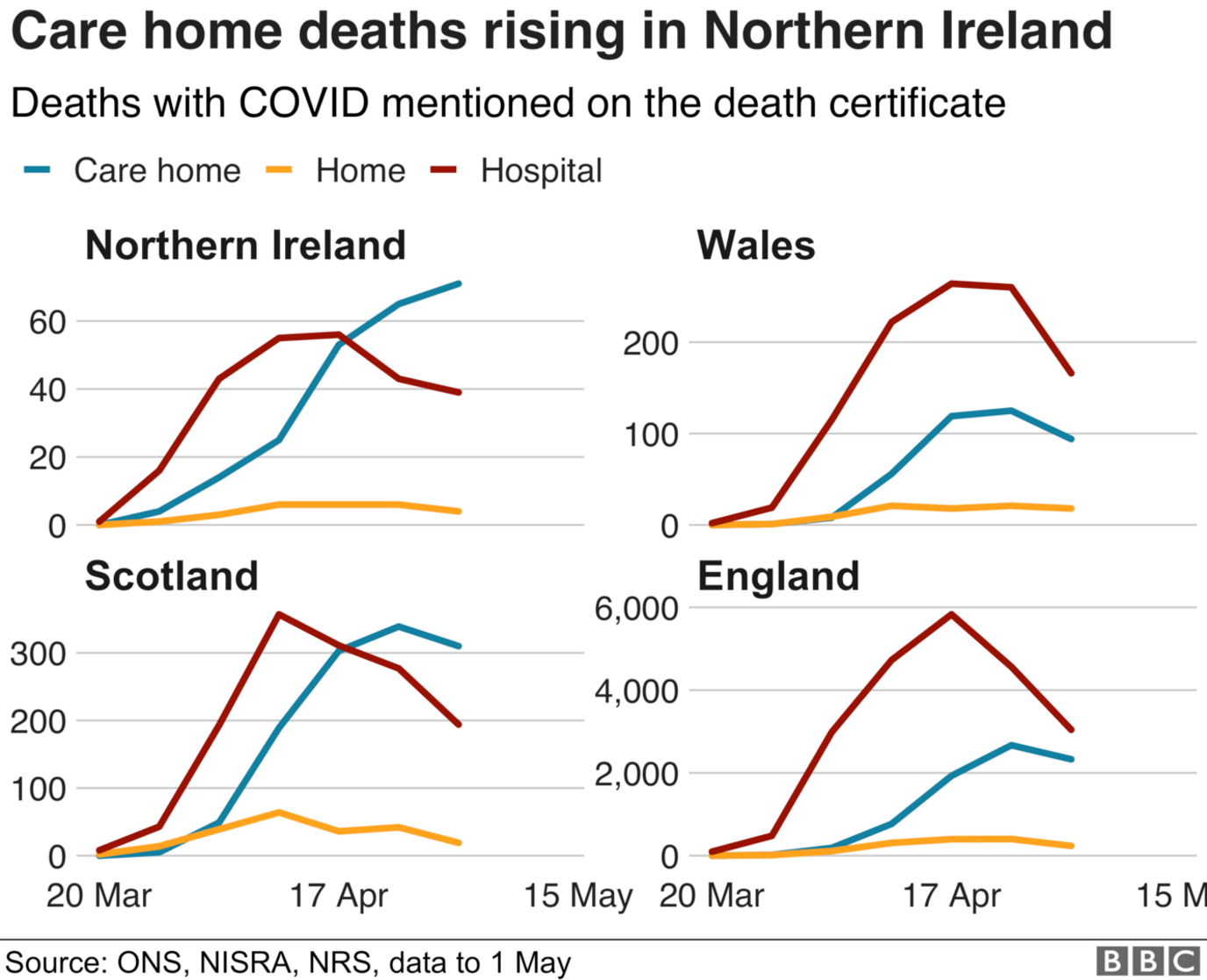
Covid-19 registered deaths throughout the UK
That still doesn't tell the full picture because some of the deaths that are due to the epidemic are not registered as caused by the coronavirus.
The best way to capture the true toll of the epidemic is to ignore lab tests and diagnoses and compare the total number of deaths seen this year to those seen last year.
Method 3: Excess deaths
The total number of deaths registered in a week - not just Covid-19 deaths - normally follows a predictable pattern.
But it has shot up since the end of March, running far higher than the previous weeks or what would be expected at this time of year.
Statisticians call these extra deaths "excess deaths" and believe that most of this excess is caused by the pandemic even if it's not mentioned on the death certificate.
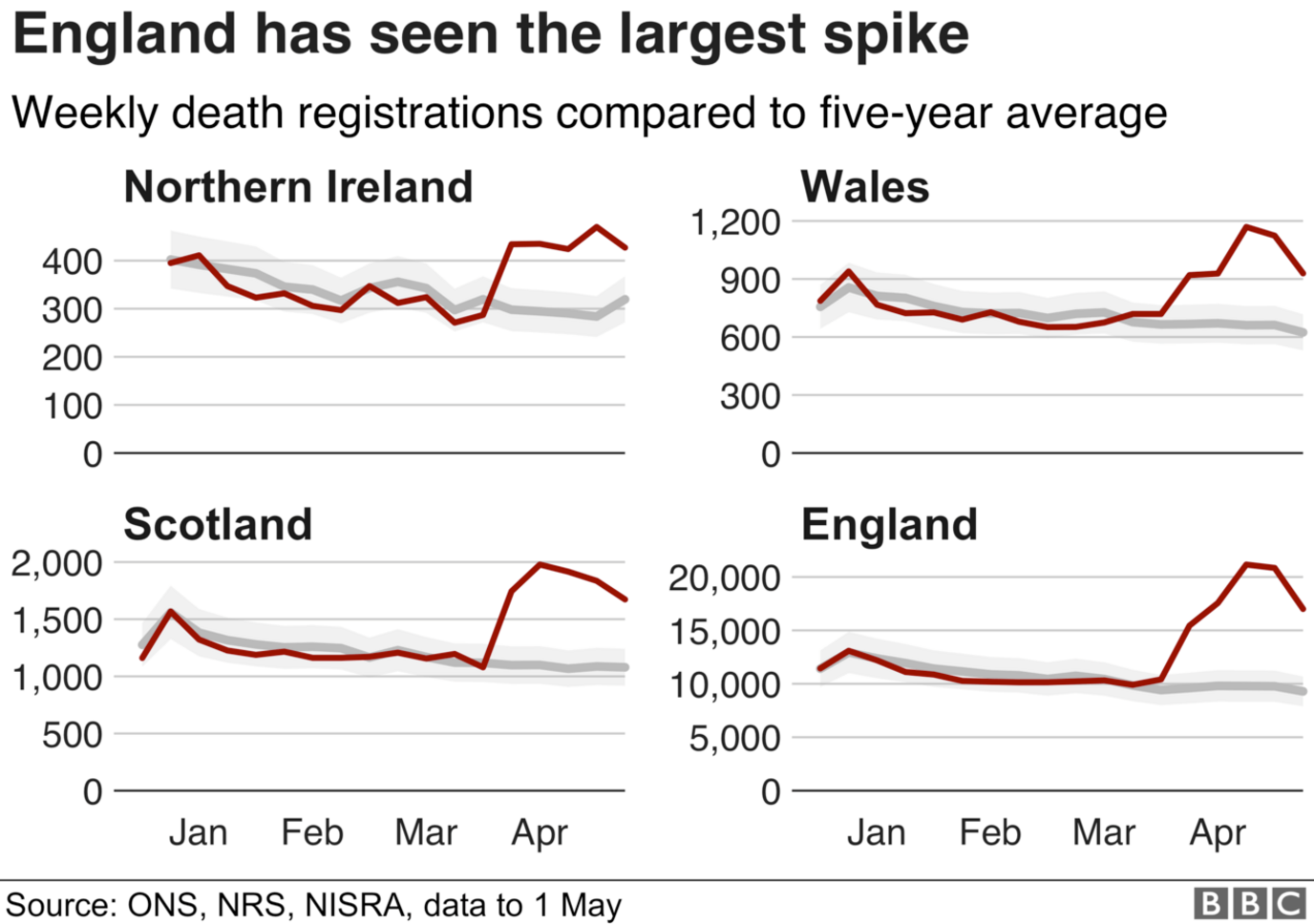
Peaks in excess deaths
England has seen the largest spike with twice as many deaths registered during the peak weeks as would be expected.
Even at the peak in Scotland, the excess in deaths wasn't as high - about 80% above normal and now closer to 55% above normal.
Northern Ireland's peak has not been as high - approximately 66% in the week of 24 April.
But that peak has come later than in the other nations, and so the journey down from the peak looks to be less advanced.
Some of the difference could be attributed to busy cities: London and Glasgow have the highest death rate per person in England and Scotland respectively.
"Population density increases cases," says Keith Neal, a professor of infectious disease epidemiology at the University of Nottingham, or at least "it has for all other infectious diseases".
Northern Ireland's excess deaths
Adding Northern Ireland's excess deaths up over the weeks since the middle of March gives the figure of 645 deaths caused by the epidemic.
Going by Northern Ireland's average five year death rate, had there been no outbreak, we would have seen 2103 people dead since the middle of March - instead there have been 2748 deaths.
This measure captures all deaths caused by the coronavirus: the infections that were confirmed and feature in the daily figures; as well as the suspected cases that were mentioned on the death certificate.
It also captures the deaths caused indirectly by the epidemic: people who died because of the strain on hospitals and care homes or people affected by the lockdown.
It is the truest measure of the toll the virus is taking.
You can follow Robert Cuffe on twitter @robertcuffe
- Published12 May 2020

- Published13 May 2020
